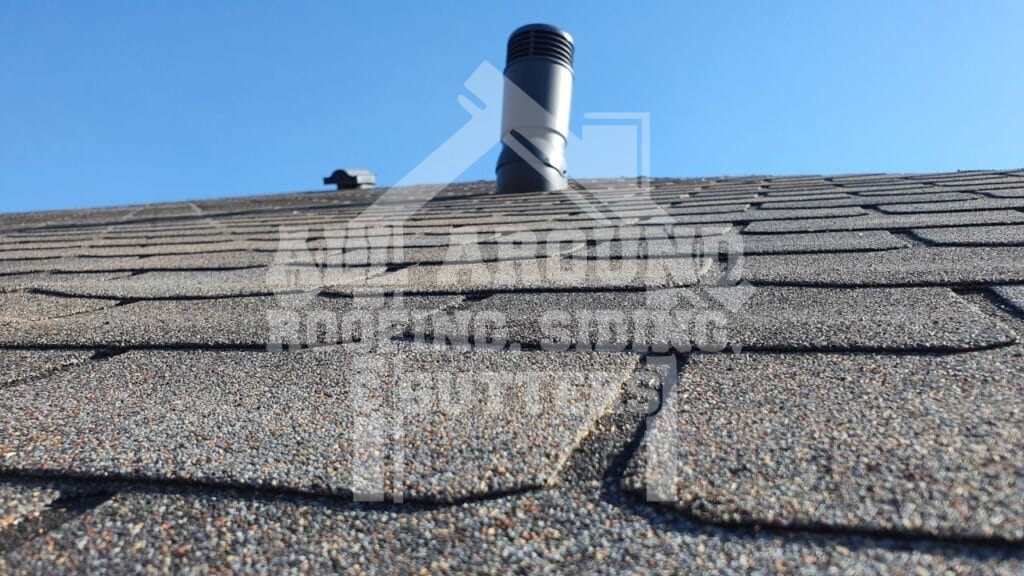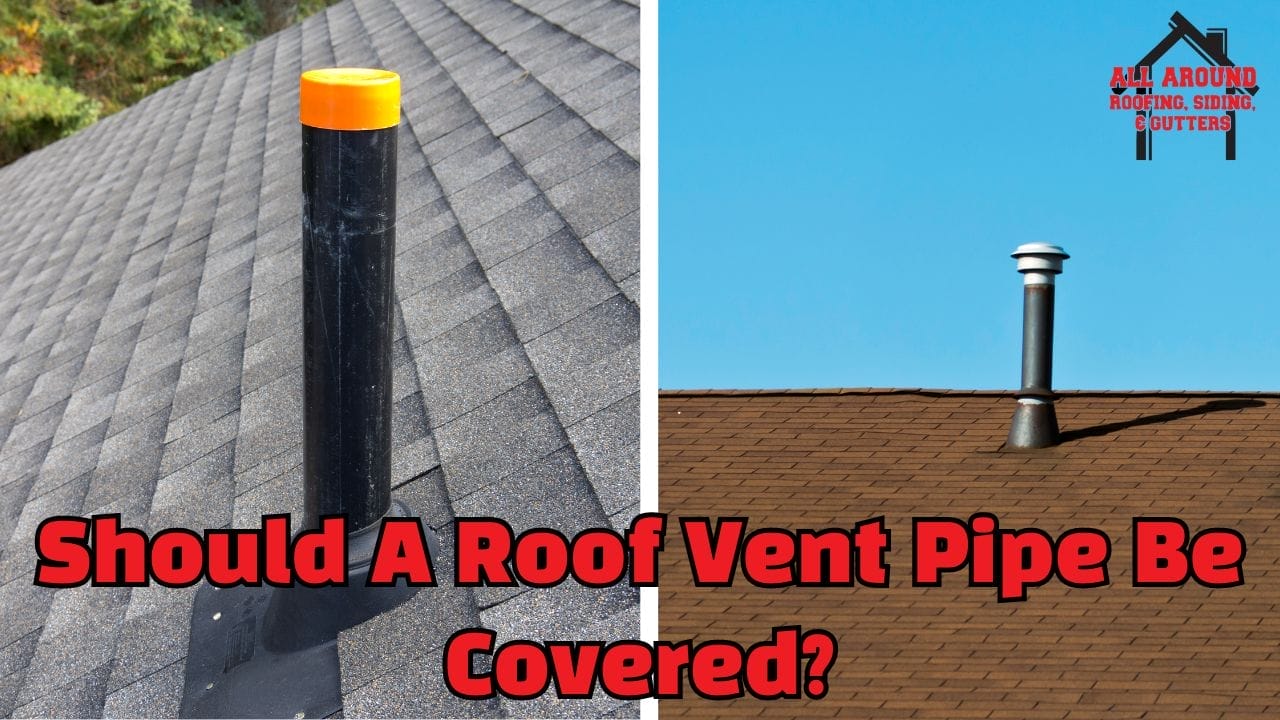If you’re wondering whether or not you should cover your roof vent pipe, you’re in the right place. Roof vent pipes are essential to a plumbing system’s overall health. They allow air to enter and exit the plumbing system, controlling the flow of sewage in your home and effectively keeping outside sewer stench. Because it relies on bringing in air from the outside, many wonder if it makes sense to cover up the pipe.
In this blog post, we’ll look at some of the reasons that make it important to cover your roof vent pipes for plumbing, and examine the pros and cons of doing so.
How Do Roof Vent Pipes Work?
The drainage system in your home is responsible for removing wastewater, and it depends on the roof vent pipes, also referred to as plumbing vent pipes, to function properly. The vent pipes must be able to draw in air in order to prevent a build-up of pressure that would otherwise cause water to stagnant, gurgling sounds in your pipes, and cause foul odors.
Roof vent pipes are primarily used to control drainage system pressure, and release gases from the plumbing system that would otherwise build up. To preserve the plumbing system’s functionality, and avoid damage to your home and sewer system, proper ventilation through roof vent pipes is crucial.
Why Should A Roof Vent Pipe Be Covered?
Plumbing vent pipes are commonly referred to as roof vent pipes, and should only be covered to prevent debris and animals from entering the pipe and clogging the plumbing system. A vent pipe cover can be used to seal the pipe and shield it from dirt and debris. To allow for adequate ventilation, it’s crucial to make sure the cover is perforated.
Without a cover, the vent can become clogged and the water inside your plumbing system becomes stagnant. This causes foul odors and water to back up in your pipes, causing leaks. In addition to reducing noise, a roof vent cover placed over the vent pipe keeps snow and rain from getting inside the pipes. You may have to pay $10 to $20 per pipe cover if your house has a lot of vent pipes.
The Pros and Cons of Covering Roof Vent Pipes
Deciding whether to cover roof vent pipes comes with both pros and cons. On the positive side, covering them helps keep out debris, and prevents blockages that can otherwise cause damage. They also stop pests from entering the pipes and building their nests.
However, one of the downsides of covering a vent pipe includes the potential for condensation buildup on the underside of the cover, which can lead to moisture problems in the attic and subsequently encourage the growth of mold and mildew.
Additionally, if it’s not properly designed, a cover might restrict airflow, reducing the efficiency of the venting system and potentially leading to issues with indoor air quality.
Improper installation of the cover could also lead to leaks, especially in regions with heavy rain or snowfall, potentially causing water damage to the roofing structure. The aesthetic aspect cannot be overlooked either, as some vent covers may not blend well with the overall roof design, impacting the home’s curb appeal. Therefore, while covering a roof vent pipe has its advantages, these potential cons must be carefully weighed and addressed.
How To Install A Roof Vent Pipe Cover

Putting a cover on your roof vent pipe is important, and here’s how you can do it:
- Collect the required supplies and tools:
Depending on the exact cover you select, you’ll need sandpaper, a roof vent pipe cover, and maybe a few more tools.
- Clean the vent pipe:
Make sure the vent pipe is free of any residue, dust, or debris that may have built up over time before putting on the new cover.
- Installation:
To install the vent cover, apply a sealant to the outer rim of the vent opening. Then place the cover over the vent pipe, making sure it covers the entire opening and fits snugly. The sealant will help with leak prevention and form a tight seal between the pipe and the cover.
Using screws, bolts, or other fasteners to hold the cover in place may be necessary, depending on the vent cover’s design. To guarantee a tight fit, make sure the fasteners are sized and positioned correctly.
- Quality Check:
After the vent cover is put in place, make sure it is secured and it’s not harming the nearby roofing materials.
Installing vent pipe covers yourself can be tricky, so always hire professional assistance when necessary. A professional will be able to safely and efficiently install a vent pipe cover correctly, so that you may experience all the benefits it has to offer.
Factors To Consider Before Covering Your Roof Vent Pipe
Are you trying to decide whether or not you should cover your roof vent pipes? Here’s what to consider:
- Local Rules: Check local construction rules and regulations to make sure covering vents is allowed.
- Climate: Think about your local climate and whether a roof vent pipe cover will be effective.
- Material and Installation: Look at the cover’s material and how it’s put on to see if it fits your needs.
- Vent Size and Shape: The size and shape of your vents can affect the cover you choose.
- Airflow: Make sure airflow isn’t blocked to avoid problems with weather and efficiency.
- Insulation: Covers can prevent heat loss, along with snow or ice buildup in the pipes.
- Cost: Though the initial cost of installation can be high, consider how covering your pipes can save you money by preventing damage to your home in the long run.
- Energy Efficiency: Covered pipes can help your home use energy more efficiently.
- Professional Help: While doing it yourself is an option, you may want to consider professional help to ensure the best protection and function.
Types of Roof Vent Pipe Covers
Let’s explore different roof vent pipe covers, each with its own purpose:
- Stainless Steel Covers: Made of stainless steel, these are for weatherproofing soil vent pipes in new or refurbished buildings.
- Roof Tile Vents: Blend in with roof tiles, offering both camouflage and efficient ventilation.
- Vent Pipe Screens: These mesh covers keep insects and debris out of vent pipes, allowing for good ventilation and avoiding clogs.
- Rain Caps: They are basic coverings that slide over vent pipes to keep rain and debris out. To protect the opening, they usually have a hooded design.
- Roof Vent Caps: Covers to shield vent pipes from debris and bird nests.
Conclusion
It is a good idea to cover roof vent pipes to protect them from outside elements, animals, and debris. Proper installation and maintenance are essential for a functioning plumbing system, so if you’re concerned, seek professional guidance.
Choosing to cover your vent pipe or not depends on where you live, the weather, and your preference. It’s best to think about each situation on its own. Homeowners can make the best decision by consulting with plumbing specialists and being aware of local regulations. Choosing roof vent pipes carefully results in a long-lasting and strong plumbing system.
Are You Looking For The Best Roofing Services In Dayton, OH?
If you decide on covering your roof vent pipe and want professional guidance and installation, then contact All Around Roofing, Siding & Gutters. For more than 10 years, we have been providing exterior and roofing services to both residential and commercial properties all over Ohio.
For more details on any roofing needs, contact All Around Roofing, Siding & Gutters at (937) 902-2839.


